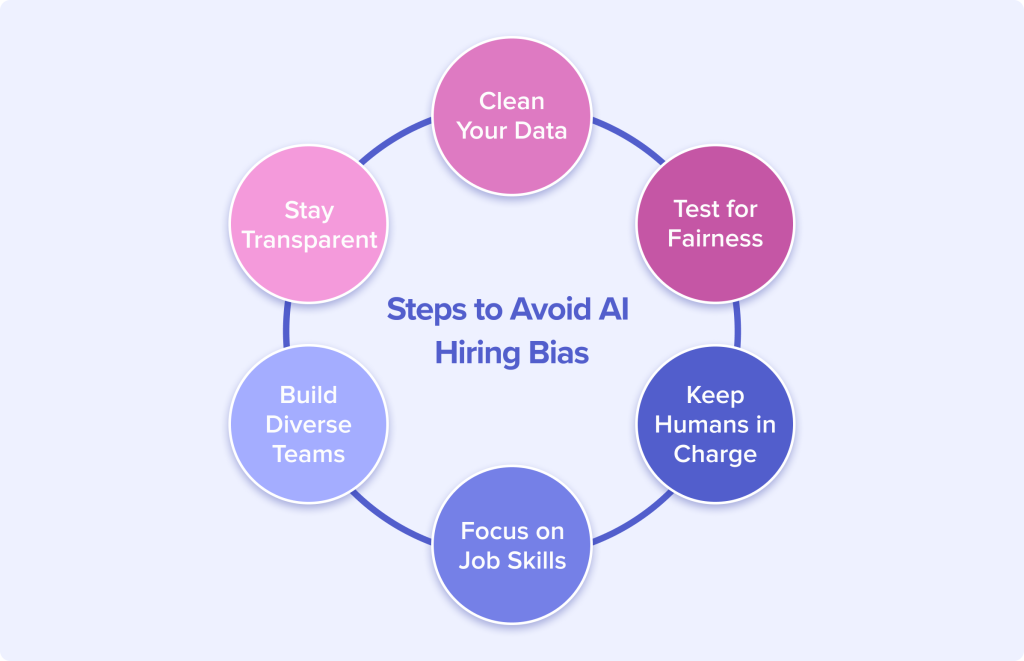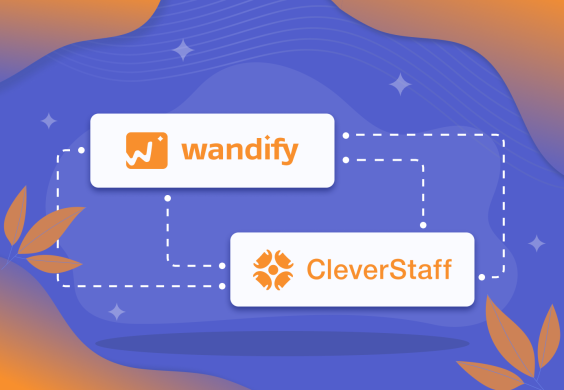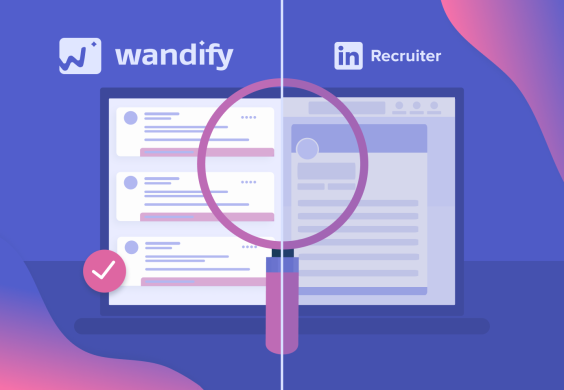The recruitment revolution is here—but it’s not what we expected.
Companies worldwide are racing to implement AI hiring tools, convinced they’ve found the silver bullet for bias-free recruitment. The reality? AI is amplifying discrimination at unprecedented scales.
Amazon’s “smart” algorithm rejected women for tech roles. Research reveals AI favors white-associated names 85% of the time. Workday faces federal lawsuits for allegedly discriminating against older candidates.
Yet the AI hiring market continues exploding. The question isn’t whether to use AI in hiring, but how to do it without destroying your diversity goals and legal standing.
This guide helps you navigate the challenges and implement AI hiring tools responsibly while avoiding common pitfalls.
Key Statistics: The Current State of AI Bias in Hiring
The numbers reveal both the promise and peril of AI in recruitment:
Market Adoption
- 87% of companies currently use AI in their recruitment process
- 68.1% increase in AI hiring tool usage from 2023 to 2024
- $661.56 million global AI recruitment market size in 2023
- 60% of organizations will use AI for end-to-end recruitment by 2025
The Bias Problem
- 35% of recruiters worry AI excludes candidates with unique skills
- 18% identify algorithmic bias as the main danger of AI recruitment
- 75% of recruiters would only accept AI hiring decisions with human oversight
- 46% of companies fear AI introduces age, gender, or race bias
Shocking Research Findings
- University of Washington research found AI models favored white-associated names 85% of the time and female-associated names only 11% of the time
- AI never favored Black male-associated names over white male-associated names
- UN suspended facial recognition hiring tools after finding they consistently ranked candidates with darker skin tones lower
How AI Bias Develops
- Biased Training Data AI systems are often trained on historical hiring data that reflects past discrimination. If a company’s existing workforce is largely male or white, the technology could inadvertently infer that successful candidates should share those characteristics.
- Programming Errors Developers may inadvertently or consciously overweigh certain factors in algorithmic decision-making due to their own biases, such as using “indicators like income or vocabulary that might unintentionally discriminate against people of a certain race or gender.”
- Proxy Discrimination A resume evaluation tool awarded more points to resumes with the word “baseball” over ones that listed “softball” for a job unrelated to sports, reflecting gender-coded activity preferences.
Real-World Case Studies: Lessons from Major Companies
Amazon’s Discriminatory Recruiting Tool (2014-2018)
What Happened: Amazon built an AI system to rate job candidates 1-5 stars, aiming to automate hiring decisions.
The Problem: The algorithm, trained on resumes predominantly submitted by male applicants over a ten-year period, exhibited a preference for male-centric language patterns, discriminating against female-oriented applicants.
Specific Issues:
- Penalized resumes containing “women’s” (e.g., “women’s chess club captain”)\
- Downgraded graduates from all-women’s colleges
- Preferred masculine-coded keywords
Outcome: Amazon abandoned the project in 2018 after failing to make it gender-neutral.
Workday’s Ongoing Legal Battle (2024-2025)
The Case: Derek Mobley sued Workday claiming their algorithms caused him to be rejected from more than 100 jobs over seven years because of his age, race, and disabilities.
Current Status:
- Federal court allowed the case to proceed as a collective action
- Represents all job applicants over 40 using Workday’s platform
- Could set precedent for AI vendor liability
The Business Case: Costs vs. Benefits of AI Hiring
Financial Benefits (When Done Right)
- AI-powered hiring tools can reduce recruitment costs by up to 30%
- AI reduces time-to-hire by an average of 50%
- Using AI can increase revenue per employee by an average of 4%
- Organizations using AI report significant time savings (85.3%) and cost savings (77.9%)
Quality Improvements
- AI-driven interview analytics increase hiring accuracy by 40%
- AI-picked candidates are 14% more likely to pass interviews
- AI hiring tools improve workforce diversity by 35% (when properly implemented)
Steps to Avoid AI Hiring Bias

- Audit your training data thoroughly. Remove biased historical hiring data that reflects past discrimination. If your previous hiring favored certain demographics, using that data will perpetuate those biases. Clean datasets by identifying and correcting patterns that correlate protected characteristics with hiring decisions.
- Test for disparate impact across demographic groups. Regularly measure whether your AI system produces significantly different outcomes for different races, genders, ages, or other protected classes. Use statistical tests to detect when selection rates vary beyond acceptable thresholds between groups, even if the AI doesn’t explicitly consider these characteristics.
- Implement human oversight and final decision-making. Never let AI make autonomous hiring decisions. Use AI as a screening tool to surface candidates, but require human recruiters to make final determinations. This creates accountability and allows for contextual judgment that AI cannot provide.
- Focus on job-relevant skills and competencies only. Design your AI to evaluate candidates based solely on abilities that directly predict job performance. Avoid proxies that might correlate with protected characteristics, such as college prestige, zip codes, or extracurricular activities that may favor certain socioeconomic backgrounds.
- Establish diverse evaluation teams and regular bias testing. Include people from different backgrounds in developing, testing, and monitoring your AI hiring tools. Conduct ongoing bias audits with fresh data, and be prepared to retrain or adjust your models when bias is detected. Different perspectives help identify blind spots.
- Create transparency and appeals processes. Inform candidates when AI is used in their evaluation and provide clear explanations of how decisions are made. Establish mechanisms for candidates to appeal or request human review of AI-driven decisions, ensuring accountability and maintaining trust in your hiring process.
Measuring Success: Key Performance Indicators
Bias Reduction Metrics
- Adverse Impact Ratios: Aim for 80%+ selection rates across protected groups
- Interview-to-Hire Ratios: Track conversion rates by demographics
- Time-to-Fill Equity: Ensure consistent hiring speeds across candidate types
- Source Diversity: Monitor candidate pipeline diversity
Business Impact Metrics
- Cost per Hire: Target 30% reduction with AI implementation
- Time-to-Fill: Aim for 50% improvement in hiring speed
- Quality of Hire: Measure 90-day retention and performance
- Recruiter Productivity: Track applications processed per recruiter
Compliance Indicators
- Audit Results: Zero adverse findings in bias assessments
- Legal Incidents: No discrimination claims related to AI hiring
- Regulatory Compliance: 100% adherence to local AI hiring laws
- Vendor Performance: Regular bias-free certifications from providers
Building Ethical AI Hiring Practices
The use of AI tools for hiring procedures is already widespread and proliferating faster than regulation can keep pace. However, the experiences of major companies demonstrate that bias-free AI hiring is achievable with proper planning and oversight.
Key Takeaways for Recruiters:
- Bias is Real: 35% of recruiters worry AI may exclude qualified candidates, and research confirms these concerns are justified.
- Human Oversight is Essential: Only 31% of recruiters would let AI decide hiring independently²¹, highlighting the importance of human judgment.
- Regular Auditing Works: AI-powered hiring tools will reduce recruitment bias by 50% by 2025 when properly implemented and monitored.
- Legal Compliance is Non-Negotiable: Employment discrimination laws apply to AI systems, regardless of intent.
- Business Benefits Are Substantial: When implemented correctly, AI hiring tools deliver significant cost savings, speed improvements, and quality enhancements.
The future of recruitment lies not in choosing between human judgment and AI capability, but in combining both effectively. Organizations that invest in bias-free AI systems today will gain competitive advantages in talent acquisition while building more diverse, inclusive workforces.


